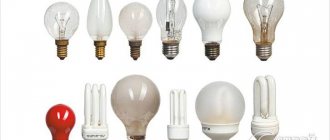An electric shock, even a weak one, can cause quite unpleasant sensations. It is necessary to understand that not only the body is affected, but also the nervous system. At first there is a slight tingling of the skin, but over time a much stronger blow can occur. Therefore, if the water is electrocuted, you should urgently repair not only the faucet, but also the electrical wiring. Below we will look at the reasons why cranes are electrified and how this problem can be eliminated.
Theft of electricity or unscrupulous neighbors
The first and most common reason why people sin is unscrupulous neighbors. Suspicions immediately arise that they are trying to steal some electrical energy and save extra kilowatts. This may be caused by their major renovation work on the apartment and the heavy loads associated with this connection - welding machines, electric heat guns, etc.
Or in winter, when the temperature of the central heating batteries is insufficient, they very often begin to use powerful heaters and heaters. Naturally, you can try to connect all this by illegally throwing wires to the wiring in addition to the meter.
The main reason for the appearance of voltage and potential in your bathroom in this case is the discharge of the neutral wire onto radiators, water pipes, sewerage and heating.
It’s true that neighbors may not always be deliberately to blame! Therefore, do not rush to immediately accuse them of stealing electricity.
In old houses with a TN-C grounding system, there is no separate grounding conductor. But many people lately still carry out wiring with three-core cables.
And on the one hand this is correct. The house will undergo reconstruction, the grounding system will change to TN-CS, and you will have everything ready. But until this moment, do not rush to connect such a conductor.
However, some, without waiting for reconstruction, simply use the risers of the nearest water supply as grounding conductors. And they immediately connect to it the very third grounding conductor. Which in turn is connected to the body of the electrical appliance.
And if the insulation of this device breaks through, then the phase will get through the pipes into the neighboring apartments.
Correct electrical wiring – no risk to life
If the electrical wiring in the bathroom is working properly, there should not be any “extra” current. To guarantee the safety of using this space, the suggested recommendations should be taken into account. This will make it possible not to fear for the life of the entire family living in the house. If it is discovered that the current is still flowing, you should immediately begin to solve this problem, if not on your own, then with the help of a specialist.
A situation where the water in the bathroom is electrifying requires immediate action. Until the reason is found out, prohibit your loved ones from using the bathroom to avoid mortal danger!
Old wiring and damaged insulation
The second reason is poor insulation of the existing wiring, which has already expired its warranty period, dried out and cracked in several places. Due to this, from time to time, electrical leaks occur on the surface of walls, pipes and other equipment connected to the bathroom. Most often, this situation occurs in apartments of old construction.
If you live on the second floor or higher, then your bathroom floor is essentially the ceiling of your neighbors below. And just the same, it may contain old wiring for lighting.
Of course, they may not feel anything, but if you get water on the floor, you may noticeably begin to receive an electric shock. Moreover, when touching any surface. You don’t go into the bathroom wearing shoes with an insulating surface, but often with bare feet.
Sometimes a frayed wire in the wall can come into contact with pipes and voltage will flow through them into your apartment.
First signs of corrosion
You can determine that your heated towel rail has become a “victim” of corrosion processes by the appearance of the equipment. The first signs of metal destruction are:
- swelling of the decorative layer (paint) - first this occurs at joints and on sharp edges of the structure;
- the appearance on the affected surface of a noticeable whitish coating, reminiscent of fine powder;
- the formation of small dents and depressions in the damaged areas - it seems that the metal has been eaten by a bug.
Minor damage is usually the result of galvanic corrosion caused by the difference in electrical potential of dissimilar metals, one of which acts as a cathode and the other as an anode. And if you add stray currents to this, the destruction will be much more serious.
Malfunction of electrical appliances and heating elements
But most often, electric shocks are possible due to a malfunction of such simple household appliances as a washing machine, titanium boiler, instantaneous water heaters, or dishwasher.
If they do not have a protective grounding, any of them will sooner or later begin to electrocute. In this case, it is enough to simply plug them into the outlet and not even start them. And when you touch the surface of this device or just water, you will begin to “pinch” in a significant way.
If there is a small leak, a slight vibration of the device will be felt.
If the tap water itself is electrocuted (usually the pipes are plastic), then the cause is most likely damage to the water heating devices through which this same water flows.
Here all the blame lies with the heating element. Its insulation is destroyed, cracks appear, the heating coil is exposed and begins to come into direct contact with water. Hence the electric shocks.
If this is one small microcrack, then when the heating element heats up, it will open and the electric shock will be stronger. When the titanium is turned off, the heating element cools down and the crack seems to close, hiding the spiral. The tingling may be barely noticeable or disappear altogether. As the heating element deteriorates, the voltage on the tap water will remain constant.
To find out, you need to “ring” the heating element with an indicator screwdriver or a multimeter.
Moreover, it should be especially noted that water can be electrocuted even if the water heating devices of your neighbors, not yours, are faulty.
It's very easy to find out. Unplug the machine or plug from the heater socket and check for voltage. If it does not disappear, then go to your neighbors and ask them to do the same. When you turn off the power from a faulty water heater, the potential on the water pipes will also disappear.
What do you need to know about stray currents?
Any metal objects located in water or in the ground, regardless of their purpose, are susceptible to corrosion, which can be:
Galvanic
It involves the reaction between different metals. For example, a galvanic couple leading to destruction can be created by steel and brass or steel and aluminum. The reaction begins as soon as a “duet” of different metals is formed and the resulting assembly comes into contact with the electrolyte. In the situation with a heated towel rail, the role of electrolyte is played by ordinary tap water, which reacts with metals due to the content of a significant amount of minerals (the same reaction will occur with sea water rich in salt). And the higher the water temperature, the more active the process of metal destruction occurs. That is why the hulls of ships that sail in the warm southern seas wear out faster than ships in the northern fleet.
Corrosion of stray currents
This process is caused by so-called stray currents that arise in the ground if it functions as a conductive medium. In this case, not only metal objects that are completely in the ground are exposed to destructive effects, but also those that are only in contact with it. But where do these currents come from? It's simple: in most cases, their appearance is the result of leakage from power lines. This group also includes the so-called zero currents present in ungrounded structures.
Short circuit in the wiring of the phase and ground conductors
The fourth reason is quite rare, but this may be your case. For example, your bathroom may not have any electrical appliances at all - no washing machine, no boiler, etc. At the same time, there are no neighbors either, and you live in your own separate wooden house. All wiring is made with a three-core cable with a grounding conductor, the panel diagram is assembled according to the rules.
And yet, you still get an electric shock in the bathroom. How is this possible?
There are two reasons:
- poor grounding circuit - they hammered one corner into the ground and considered this sufficient, or the contact was broken at the point of connection to the circuit
- phase short circuit to the grounding conductor, in any of the wiring lines, not necessarily in the bathroom
Well, as a rule, you naturally do not have an RCD in your electrical panel. In this case, a simple circuit breaker will not turn off, since the current for it is too small.
This can happen:
- as a result of screwing a self-tapping screw into the wall, when it simultaneously hits the phase and the yellow-green PE conductor
- when the insulation heats up and the wires in the lighting lamp short out
- Short circuit of phases and grounding conductors in a socket with a grounding contact
- due to a short circuit in a regular plug. The insulation of the phase conductor is rubbed against the pressure plate. And it is usually grounded.
Don't trust cheap carriers and extension cords yet. They need to be disabled first.
And since this conductor is connected to a common grounding bus in the panel, the potential along it will spread throughout the house and apartment.
In this case, you will have voltage on all grounded devices.
You will only feel it first of all in the bathroom, where it is humid and damp. The presence of potential is checked with a screwdriver using an indicator, and it is better to use it with a neon bulb rather than with an LED.
Adviсe
To prevent this situation from happening, it is important to follow some recommendations:
- In apartment buildings, a common grounding system is installed. Under no circumstances should each apartment be grounded separately.
- The use of sockets with a grounding contact without the grounding itself is prohibited.
- Grounding should be checked regularly, as violations in its operation lead to unpleasant consequences.
- The work is carried out by experienced craftsmen.
- It is better to choose electrical wiring from a copper cable with a cross-section of 2.5 mm2.
- Electrical appliances are connected via RCD.
- Sockets must be built-in, and switches must be ceramic with grounding.
In most cases, electric shocks from water do not pose a serious danger, but they should not be ignored. The most suitable option would be to correct the deficiencies so that this problem does not harm life and health. To do this, it is better to use the services of a specialist who will identify problems and correct them.
There is no or poor contact on the grounding, grounding in the shield
Often, even in newly built houses with 3-wire cable lines, a situation occurs when there is a small voltage within a few tens of volts on the grounding conductor, and accordingly on everything to which it is connected.
It seems that the wiring in the apartment is new, and everything is assembled in junction boxes according to the diagrams with respect to “polarity,” but electric shock occurs everywhere you don’t touch.
The explanation may be very simple. In the apartment panel, all grounding wires are collected in a heap and connected to one common bus.
But it is just neither grounded nor zeroed! The electricians simply forgot to do this. This is where all the problems come from.
Or there is a break somewhere in the main ground wire from the circuit to your panel. Check the voltage in the panel between the ground bus and the phase. It should be stable around 220V. If the voltage “floats” in absolutely arbitrary parameters, then there is clearly a break somewhere.
Polymer processing - a solution to the problem without grounding
But you can solve the problem in another way by treating the inner surface of a stainless steel water heated towel rail with a special polymer composition. It will create an insulating coating that will “work” effectively, preventing the formation of potential differences and the occurrence of corrosion.
Polymer treatment of water heated towel rails is an additional service that is performed by our company at the buyer’s request. And you can order it online on the ZIGZAG website.
Go to
How to get rid of electric shocks in the bathroom
If the water faucet constantly shocks, or you feel small discharges and tingling sensations when touching the bathtub body or pipes, the problem must be solved quickly. What are the ways to combat electric shocks in the bathroom?
Some people think: I’ll ground the bathtub and everything will be fine.
However, keep in mind one important point: if you have an extraneous potential applied specifically to the water, then forced grounding only in the bathroom may even worsen the situation!
You will thereby increase the potential difference even more.
Therefore, you should start by checking all electrical appliances and their connection points to the 220 Volt power grid. Unplug them one at a time and check what has changed after each shutdown. This way you can find faulty equipment.
Moreover, disconnect from the network not only appliances installed directly in the bathroom, but throughout the entire house. The reason described above, with a damaged plug or socket with grounding, is clear proof of this.
If it is not the equipment that is to blame, but the wiring under the plaster, some try to swap the outgoing phase with zero on the input switchboard.
This is not recommended. Because there may be zeroed equipment in the apartment.
True, sometimes this measure helps. Since the core with damaged insulation changes from phase to zero and current leakage through it to the damp wall or fittings in it disappears. But the insulation is already damaged in any case and further operation in this mode can lead to a fire!
If the whole point is not a breakdown of your equipment or your wiring, but a breakdown of your neighbors, then this is revealed as follows.
You turn off only the phase on the input circuit breaker or unscrew the phase plug in the panel, and thereby completely de-energize the entire apartment. Turning off both phase and zero at the same time may not produce results, since there will no longer be a potential difference.
If the “tingling” has not disappeared, then now you definitely need to go to the neighbors. Moreover, these may not necessarily be neighbors across the wall, but residents several floors above.
A little about the nature of stray currents and their danger
The reason for the appearance of stray currents acting on your heated towel rail is the difference in potential of grounded structures. And in order to equalize the potentials, it is necessary to create a system in which all metal elements will be in contact with the neutral conductor in the existing input distribution device.
Such a system will ensure maximum safety for the user (if you put your hand on a pipe and grounded equipment, you will not receive a fatal discharge). And this is very important, because the greater the potential difference, the more serious the danger threatens a person. For example:
- If this value is 4 or 6B, you may receive a 5 mA shock. It will be sensitive but not fatal.
- If its strength is 50 mA, cardiac fibrillation may develop.
- And when a human body is exposed to a current of 100 mA, death occurs.
But there are cases where even a small potential difference of 4B became the cause of death.











